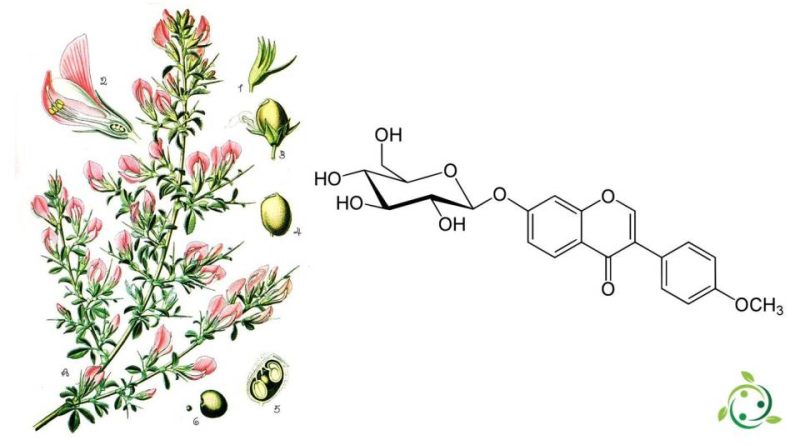Ononin
Ononin
Ononin is a glycoside isolated from the roots of restharrow (Ononis spinosa L.) which is a small thorny shrub, no taller than 50 cm, with fragrant flowers, belonging to the Fabaceae family.
The official term of ononin in the IUPAC nomenclature is: 7- (β-D-glucopyranosiloxy) -4′-methoxyisoflavone and is a compound with a brute or molecular formula: C22H22O9.
Ononin is an isoflavonic glycoside, the 7-O-β-D-glucopyranoside of formononetin, which in turn is the 4′-O-methoxy derivative of the parent isoflavone daidzein.
From a physical point of view, ononin is a white, crystalline powder, not very soluble in water, with a diuretic and purifying action.
Although this substance was not known, the properties of Ononis spinosa have been known for some time, so much so that in the 1st century AD, Dioscorides, a famous Greek botanist, wrote that the rind of the root macerated in wine increases diuresis, reduces gravel and corrodes. the margin of the ulcers. In the Middle Ages and during the Renaissance, the restharrow plant was certainly used.
However, ononin is an important isoflavone which is also found in a number of other plants and herbs such as soy and Glycyrrhiza uralensis.
This substance, through the intestinal bacterial metabolic pathways, can undergo demethylation and deglycosylation. It follows that the formation of formononetin and / or daidzein is possible.
An in vitro anti-inflammatory effect on lipopolysaccharide-induced inflammation (LPS) was shown in one study.
Warning: The information shown is not medical advice and may not be accurate. The contents are for illustrative purposes only and do not replace medical advice.

